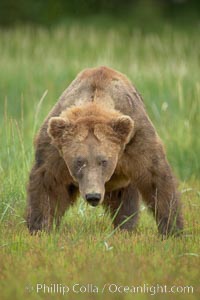
Full grown, mature male coastal brown bear boar (grizzly bear) in sedge grass meadows.
Species: Brown bear, Ursus arctos
Location: Lake Clark National Park, Alaska
Image ID: 19134
Species: Brown bear, Ursus arctos
Location: Lake Clark National Park, Alaska
Image ID: 19134
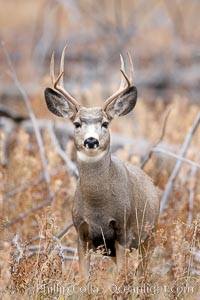
Mule deer in tall grass, fall, autumn.
Species: Mule deer, Odocoileus hemionus
Location: Yellowstone National Park, Wyoming
Image ID: 19577
Species: Mule deer, Odocoileus hemionus
Location: Yellowstone National Park, Wyoming
Image ID: 19577
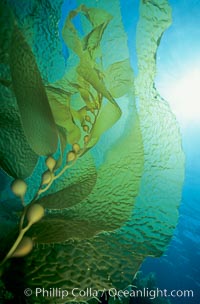
Kelp frond showing pneumatocysts.
Species: Giant kelp, Macrocystis pyrifera
Location: San Clemente Island, California
Image ID: 00627
Species: Giant kelp, Macrocystis pyrifera
Location: San Clemente Island, California
Image ID: 00627
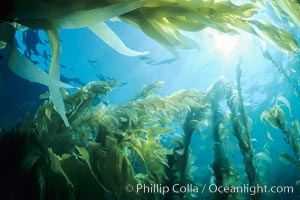
A kelp forest, with sunbeams passing through kelp fronds. Giant kelp, the fastest growing plant on Earth, reaches from the rocky bottom to the ocean's surface like a submarine forest.
Species: Giant kelp, Macrocystis pyrifera
Location: San Clemente Island, California
Image ID: 02411
Species: Giant kelp, Macrocystis pyrifera
Location: San Clemente Island, California
Image ID: 02411
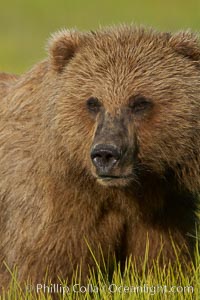
Portrait of a young brown bear, pausing while grazing in tall sedge grass. Brown bears can consume 30 lbs of sedge grass daily, waiting weeks until spawning salmon fill the rivers.
Species: Brown bear, Ursus arctos
Location: Lake Clark National Park, Alaska
Image ID: 19135
Species: Brown bear, Ursus arctos
Location: Lake Clark National Park, Alaska
Image ID: 19135
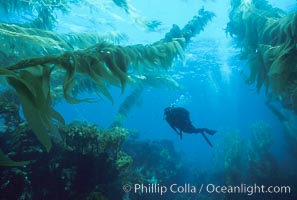
A SCUBA diver swims through a giant kelp forest which is tilted back by strong ocean currents. Giant kelp, the fastest plant on Earth, reaches from the rocky bottom to the ocean's surface like a submarine forest.
Species: Giant kelp, Macrocystis pyrifera
Location: San Clemente Island, California
Image ID: 01107
Species: Giant kelp, Macrocystis pyrifera
Location: San Clemente Island, California
Image ID: 01107
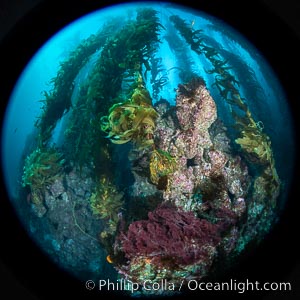
The Kelp Forest and Rocky Reef of San Clemente Island. Giant kelp grows rapidly, up to 2' per day, from the rocky reef on the ocean bottom to which it is anchored, toward the ocean surface where it spreads to form a thick canopy. Myriad species of fishes, mammals and invertebrates form a rich community in the kelp forest. Lush forests of kelp are found throughout California's Southern Channel Islands.
Species: Giant kelp, Macrocystis pyrifera
Location: San Clemente Island, California
Image ID: 38494
Species: Giant kelp, Macrocystis pyrifera
Location: San Clemente Island, California
Image ID: 38494
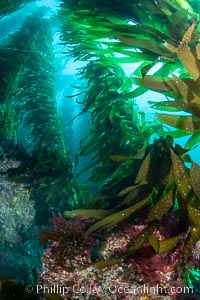
The Kelp Forest and Rocky Reef of San Clemente Island. Giant kelp grows rapidly, up to 2' per day, from the rocky reef on the ocean bottom to which it is anchored, toward the ocean surface where it spreads to form a thick canopy. Myriad species of fishes, mammals and invertebrates form a rich community in the kelp forest. Lush forests of kelp are found throughout California's Southern Channel Islands.
Species: Giant kelp, Macrocystis pyrifera
Location: San Clemente Island, California
Image ID: 38495
Species: Giant kelp, Macrocystis pyrifera
Location: San Clemente Island, California
Image ID: 38495
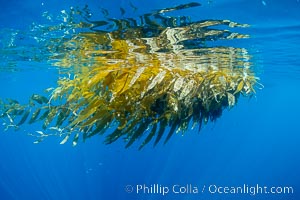
Drift kelp paddy floating on the ocean surface, San Diego.
Species: Giant kelp, Macrocystis pyrifera
Location: San Diego, California
Image ID: 38533
Species: Giant kelp, Macrocystis pyrifera
Location: San Diego, California
Image ID: 38533
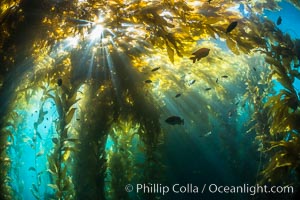
Sunlight streams through giant kelp forest. Giant kelp, the fastest growing plant on Earth, reaches from the rocky reef to the ocean's surface like a submarine forest.
Species: Giant kelp, Macrocystis pyrifera
Location: Catalina Island, California
Image ID: 33433
Species: Giant kelp, Macrocystis pyrifera
Location: Catalina Island, California
Image ID: 33433
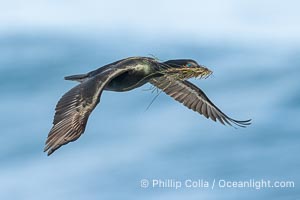
Brandt's Cormorant in flight carrying surfgrass for nest building, ocean background.
Species: Brandt's Cormorant, Phalacrocorax penicillatus
Location: La Jolla, California
Image ID: 40870
Species: Brandt's Cormorant, Phalacrocorax penicillatus
Location: La Jolla, California
Image ID: 40870
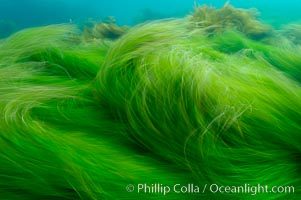
Surf grass on the rocky reef -- appearing blurred in this time exposure -- is tossed back and forth by powerful ocean waves passing by above. San Clemente Island.
Species: Surfgrass, Phyllospadix
Location: San Clemente Island, California
Image ID: 10237
Species: Surfgrass, Phyllospadix
Location: San Clemente Island, California
Image ID: 10237
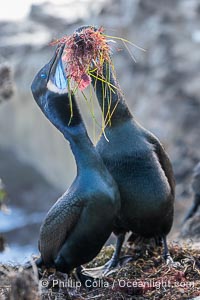
Nesting Pair of Brandt's Cormorants exchanging red algae and surf grass nesting material, on La Jolla Cliffs.
Species: Brandt's cormorant, Phalacrocorax penicillatus
Location: La Jolla, California
Image ID: 40871
Species: Brandt's cormorant, Phalacrocorax penicillatus
Location: La Jolla, California
Image ID: 40871
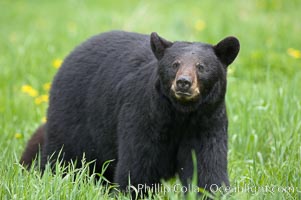
Black bear walking in a grassy meadow. Black bears can live 25 years or more, and range in color from deepest black to chocolate and cinnamon brown. Adult males typically weigh up to 600 pounds. Adult females weight up to 400 pounds and reach sexual maturity at 3 or 4 years of age. Adults stand about 3' tall at the shoulder.
Species: American black bear, Ursus americanus
Location: Orr, Minnesota
Image ID: 18744
Species: American black bear, Ursus americanus
Location: Orr, Minnesota
Image ID: 18744
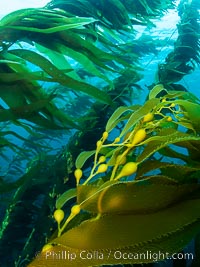
Kelp fronds showing pneumatocysts, bouyant gas-filled bubble-like structures which float the kelp plant off the ocean bottom toward the surface, where it will spread to form a roof-like canopy.
Species: Giant kelp, Macrocystis pyrifera
Location: San Clemente Island, California
Image ID: 38498
Species: Giant kelp, Macrocystis pyrifera
Location: San Clemente Island, California
Image ID: 38498
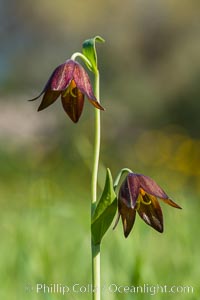
Chocolate lily growing among grasses on oak-covered hillsides. The chocolate lily is a herbaceous perennial monocot that is increasingly difficult to find in the wild due to habitat loss. The flower is a striking brown color akin to the color of chocolate.
Location: Santa Rosa Plateau Ecological Reserve, Murrieta, California
Image ID: 33151
Location: Santa Rosa Plateau Ecological Reserve, Murrieta, California
Image ID: 33151
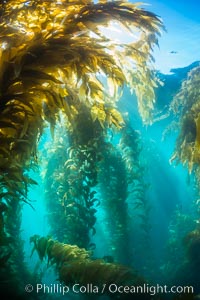
Sunlight streams through giant kelp forest. Giant kelp, the fastest growing plant on Earth, reaches from the rocky reef to the ocean's surface like a submarine forest.
Species: Giant kelp, Macrocystis pyrifera
Location: Catalina Island, California
Image ID: 33434
Species: Giant kelp, Macrocystis pyrifera
Location: Catalina Island, California
Image ID: 33434
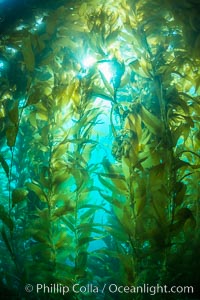
Sunlight streams through giant kelp forest. Giant kelp, the fastest growing plant on Earth, reaches from the rocky reef to the ocean's surface like a submarine forest.
Species: Giant kelp, Macrocystis pyrifera
Location: Catalina Island, California
Image ID: 33435
Species: Giant kelp, Macrocystis pyrifera
Location: Catalina Island, California
Image ID: 33435
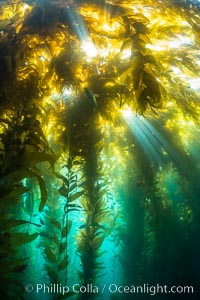
Sunlight streams through giant kelp forest. Giant kelp, the fastest growing plant on Earth, reaches from the rocky reef to the ocean's surface like a submarine forest.
Species: Giant kelp, Macrocystis pyrifera
Location: Catalina Island, California
Image ID: 33436
Species: Giant kelp, Macrocystis pyrifera
Location: Catalina Island, California
Image ID: 33436
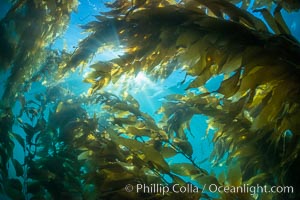
Sunlight streams through giant kelp forest. Giant kelp, the fastest growing plant on Earth, reaches from the rocky reef to the ocean's surface like a submarine forest.
Species: Giant kelp, Macrocystis pyrifera
Location: Catalina Island, California
Image ID: 33437
Species: Giant kelp, Macrocystis pyrifera
Location: Catalina Island, California
Image ID: 33437
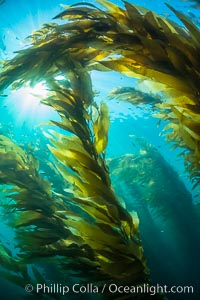
Sunlight streams through giant kelp forest. Giant kelp, the fastest growing plant on Earth, reaches from the rocky reef to the ocean's surface like a submarine forest.
Species: Giant kelp, Macrocystis pyrifera
Location: Catalina Island, California
Image ID: 33438
Species: Giant kelp, Macrocystis pyrifera
Location: Catalina Island, California
Image ID: 33438
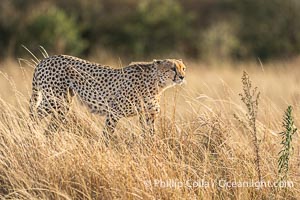
Cheetah in tall grass in the Masai Mara, Acinonyx jubatus, Kenya.
Species: Cheetah, Acinonyx jubatus
Location: Maasai Mara National Reserve, Kenya
Image ID: 39627
Species: Cheetah, Acinonyx jubatus
Location: Maasai Mara National Reserve, Kenya
Image ID: 39627
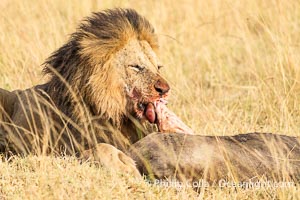
Male Lion with Fresh Kill in Tall Grass, Masai Mara, Kenya.
Species: African lion, Panthera leo
Location: Maasai Mara National Reserve, Kenya
Image ID: 39632
Species: African lion, Panthera leo
Location: Maasai Mara National Reserve, Kenya
Image ID: 39632
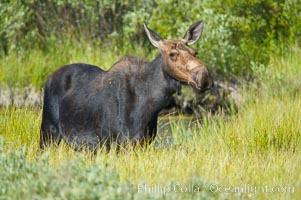
Adult female moose in deep meadow grass near Christian Creek.
Species: Moose, Alces alces
Location: Christian Creek, Grand Teton National Park, Wyoming
Image ID: 13039
Species: Moose, Alces alces
Location: Christian Creek, Grand Teton National Park, Wyoming
Image ID: 13039
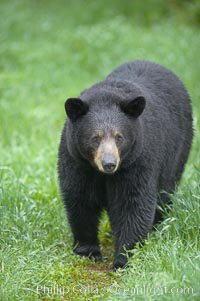
Black bear walking in a grassy meadow. Black bears can live 25 years or more, and range in color from deepest black to chocolate and cinnamon brown. Adult males typically weigh up to 600 pounds. Adult females weight up to 400 pounds and reach sexual maturity at 3 or 4 years of age. Adults stand about 3' tall at the shoulder.
Species: American black bear, Ursus americanus
Location: Orr, Minnesota
Image ID: 18741
Species: American black bear, Ursus americanus
Location: Orr, Minnesota
Image ID: 18741
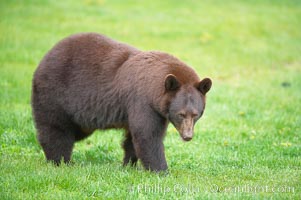
Black bear walking in a grassy meadow. Black bears can live 25 years or more, and range in color from deepest black to chocolate and cinnamon brown. Adult males typically weigh up to 600 pounds. Adult females weight up to 400 pounds and reach sexual maturity at 3 or 4 years of age. Adults stand about 3' tall at the shoulder.
Species: American black bear, Ursus americanus
Location: Orr, Minnesota
Image ID: 18743
Species: American black bear, Ursus americanus
Location: Orr, Minnesota
Image ID: 18743
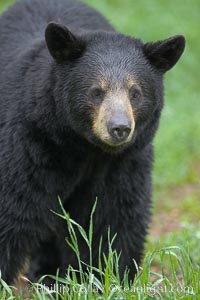
Black bear walking in a grassy meadow. Black bears can live 25 years or more, and range in color from deepest black to chocolate and cinnamon brown. Adult males typically weigh up to 600 pounds. Adult females weight up to 400 pounds and reach sexual maturity at 3 or 4 years of age. Adults stand about 3' tall at the shoulder.
Species: American black bear, Ursus americanus
Location: Orr, Minnesota
Image ID: 18748
Species: American black bear, Ursus americanus
Location: Orr, Minnesota
Image ID: 18748
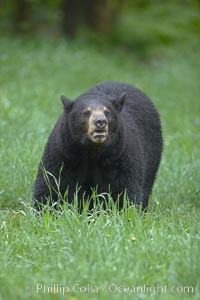
Black bear walking in a grassy meadow. Black bears can live 25 years or more, and range in color from deepest black to chocolate and cinnamon brown. Adult males typically weigh up to 600 pounds. Adult females weight up to 400 pounds and reach sexual maturity at 3 or 4 years of age. Adults stand about 3' tall at the shoulder.
Species: American black bear, Ursus americanus
Location: Orr, Minnesota
Image ID: 18749
Species: American black bear, Ursus americanus
Location: Orr, Minnesota
Image ID: 18749
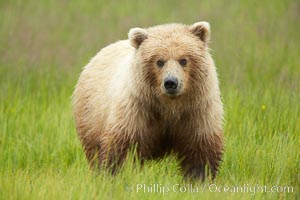
Juvenile female coastal brown bear (grizzly bear) grazes on sedge grass.
Species: Brown bear, Ursus arctos
Location: Lake Clark National Park, Alaska
Image ID: 19137
Species: Brown bear, Ursus arctos
Location: Lake Clark National Park, Alaska
Image ID: 19137
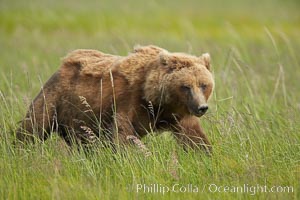
Coastal brown bear in meadow. The tall sedge grasses in this coastal meadow are a food source for brown bears, who may eat 30 lbs of it each day during summer while waiting for their preferred food, salmon, to arrive in the nearby rivers.
Species: Brown bear, Ursus arctos
Location: Lake Clark National Park, Alaska
Image ID: 19138
Species: Brown bear, Ursus arctos
Location: Lake Clark National Park, Alaska
Image ID: 19138